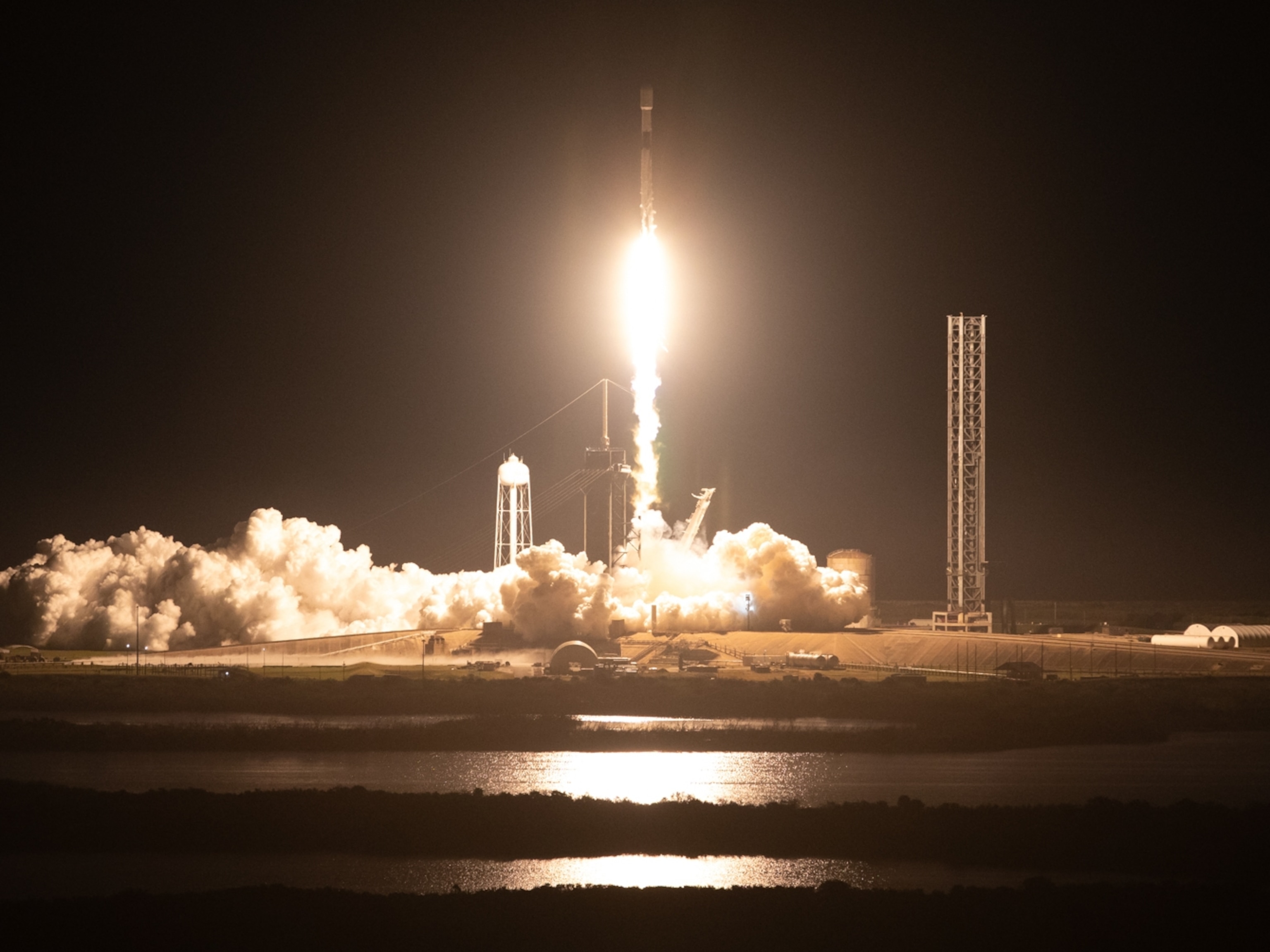
Saturn Moon Has Tropical "Great Salt Lake," Methane Marshes
Titan has equatorial oasis as large as Utah landmark, NASA craft hints.
Saturn's hazy moon Titan has a huge tropical lake and marshes of liquid methane near its equator, suggest surprising new images from a NASA spacecraft.
Titan is the only moon in the solar system to host a significant atmosphere—a roiling haze of organic molecules, which some scientists think might include the ingredients for life as we know it.
It's also the only object in the solar system, other than Earth, to have bodies of liquid on its surface—previous data from NASA's Cassini orbiter revealed hundreds of lakes near the frigid moon's poles.
With surface temperatures hovering around -297 degrees Fahrenheit (-183 degrees Celsius), Titan is far too cold to have liquid water. Instead, the lakes are filled with liquid hydrocarbons, such as methane and ethane.
(See "Methane Rain Formed New Lake on Saturn Moon.")
Now, for the first time, Cassini images show dark regions that appear to be pools of hydrocarbons around the moon's equator.
"We detect evidence for the presence of a tropical lake with an area of 2,400 square kilometers [927 square miles]—as large as the Great Salt Lake in Utah—with a depth of at least a meter [three feet]," said study leader Caitlin Griffith, a planetary scientist at the University of Arizona in Tucson.
"Our work also suggests the existence of a handful of smaller and shallower ponds, similar to marshes on Earth, with knee- to ankle-level depths."
Oases of Liquid Methane
Based on the polar lakes and other evidence, scientists think methane—the main component of natural gas—might play a similar role as water on Earth, cycling between the atmosphere and the surface.
But until now, Titan's lower latitudes were thought to be dry, filled mostly with rippling sand dunes.
Scientists had previously seen only hints of moistness in Titan's tropical areas. For instance, in 2004 the European Huygens lander set down near the moon's equator and captured views of what appeared to be rain runoff.
In addition, later Cassini images turned up evidence of storms in this supposedly parched region. (See "Spring Rains Darken Saturn's Moon Titan.")
Still, Griffith and colleagues think the newfound lakes can't be explained by rainfall, since a number of circulation models say that significant bodies of liquid shouldn't be stable at the moon's tropics based on precipitation alone.
"Any liquid deposited in the tropical surface evaporates quickly and eventually is transported by Titan's circulation to the poles, where the large polar lakes appear," Griffith said.
"Lakes at the poles are easy to explain, but lakes in the tropics are not."
One possibility, Griffith said, is that "our detection of tropical lakes suggests that a subterranean source of methane may flood the surface and dampen the ground, in essence creating oases on Titan."
Tropical Lakes Feed Methane Cycle?
While it's unclear how long the tropical lakes might stay on Titan's surface, planetary scientist Oded Aharonson agrees that their most likely source would be subterranean.
"The possibility of persistent liquid bodies in the low latitudes ... would point to an active subsurface hydrology on Titan," said Aharonson, of the California Institute of Technology, who was not part of the study team.
In fact, Aharonson thinks the tropical lakes could be the long-sought global source of liquid hydrocarbons on Titan—the region where the compounds first bubble up to the surface to feed the moon's methane cycle.
"If the equatorial regions have subsurface methane emerging to the surface," he said, "that would be a viable source."
The tropical lakes on Titan are described in this week's issue of the journal Nature.





